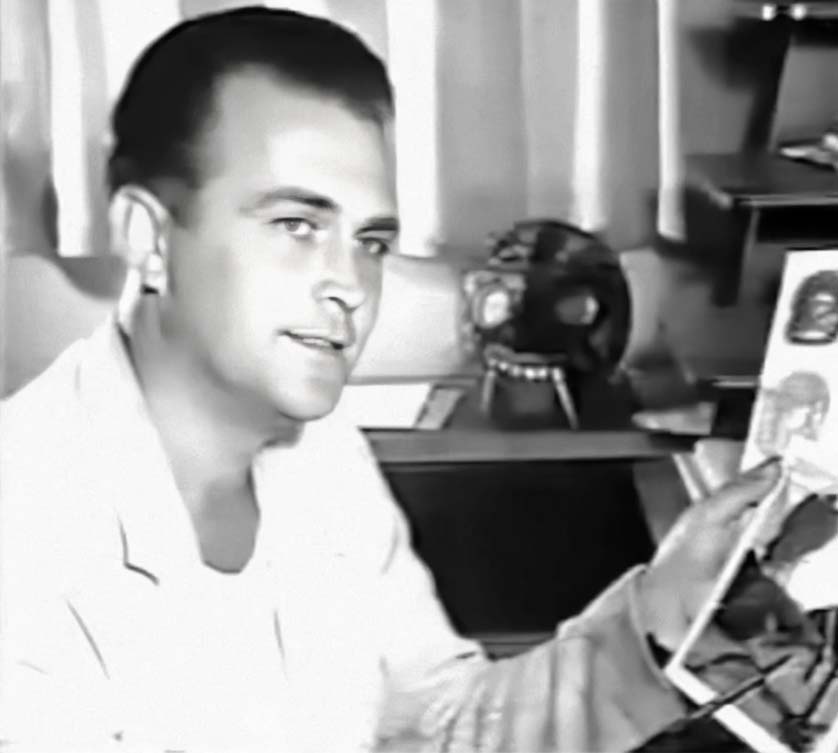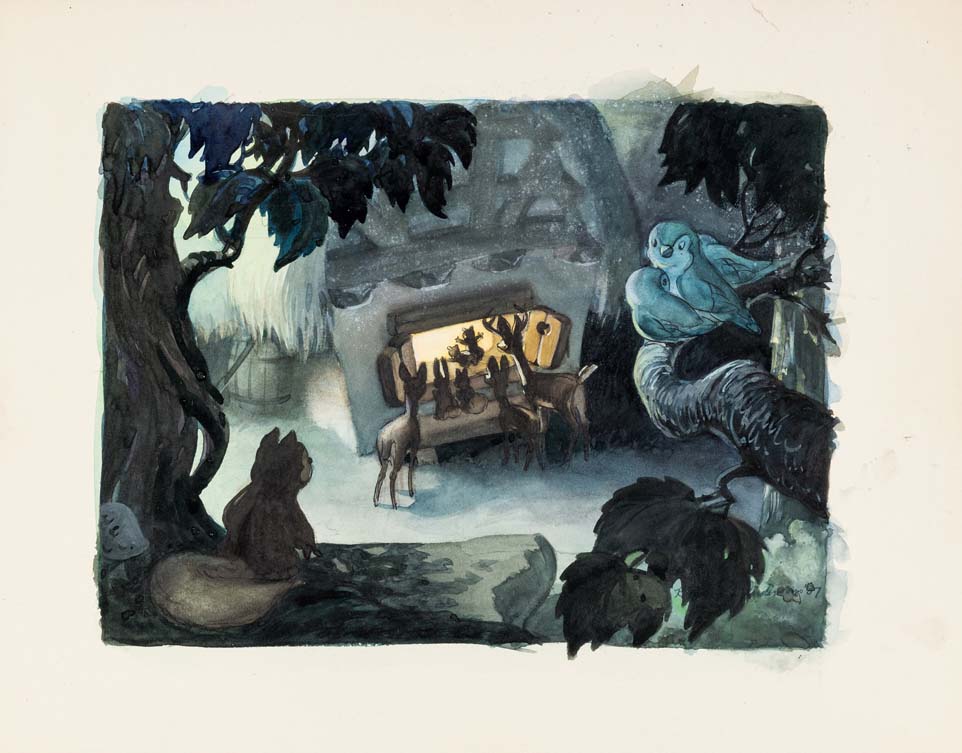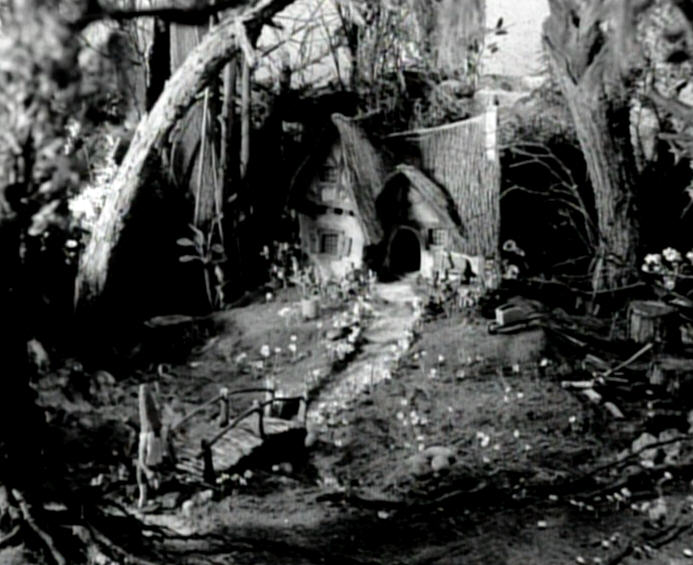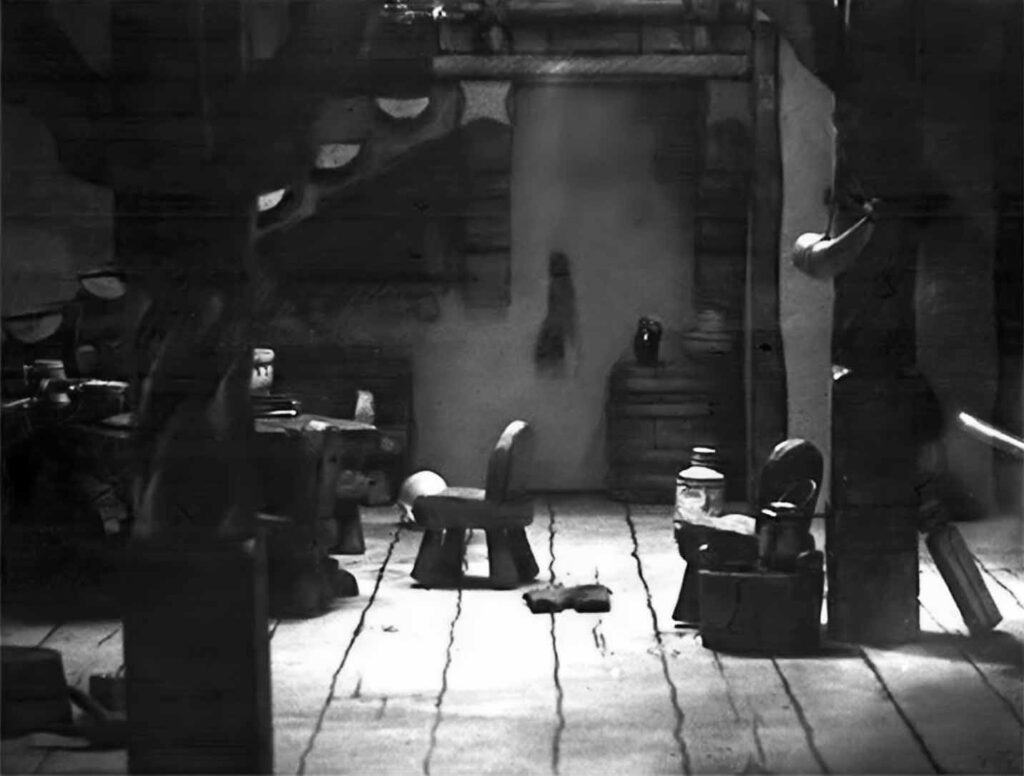Information
Full name: Kenneth B. Anderson
Birth: March 17, 1909 in Seattle, Washington
Death: December 13, 1993 in La Cañada Flintridge, California
Marriage:
Polly (1934 – ?)
Worked at the Disney studio between:
July 1934 – 1978
Job on Snow White:
Art director
Layout artist (uncredited)
Storyboard artist on sequences 8A, 8B (uncredited)
Designer of the cottage model (uncredited)
Multiplane camera technician (uncredited)
Back to Main Titles

Ken Anderson was a pioneering artist and layout designer at Walt Disney Studios, known for his significant contributions to some of the studio’s most iconic animated features. Born near Seattle in 1909, Anderson studied art in Fontainebleau, France, then Rome, Italy. He started his career at MGM sketching sets, then joined Disney in the summer of 1934. His wife Polly was also hired as a painter, a position she kept three years.
His entry into the studio was somewhat unconventional. He was interviewed by Clarence Nash, the voice of Donald Duck, and began working under George Drake. After only two weeks, Drake tricked him into drinking liquor and then threw him out. Remarkably, Drake forgot about the incident a couple of weeks later, and Anderson resumed his place at the studio.
Ken’s first task at Disney was animating a moving background in the Three Orphan Kittens (1935), a Silly Symphony short. He later transitioned to the layout department, working under Charles Philippi and Hugh Hennesy. His talents earned him a similar job in Snow White and the Seven Dwarfs. He remembered the famous time when Walt Disney initially told his staff the story he had in mind as “his best evening ever”.
Anderson was also instrumental in the film’s visual development. He built the original model of the dwarfs’ cottage and explained how it was used with wash-off cels—a technique that allowed animators to integrate moving objects while maintaining consistent proportions. His first task was thus to design a sequence with a peddler woman with a moving background and three trees as a test. The finished sequence uses a traditional background and multiplane effects, but his work earned him a credit as art director. He also participated in the development of the horizontal multiplane camera, a key innovation in Disney’s visual storytelling.
He also did storyboarding, notably for the atmospheric cloud sequence which was discarded. One of Anderson’s major layout contributions was for the entertainment sequence, directed by Wilfred Jackson. He designed the elaborate pipe organ and worked closely with Jack Miller on the dwarfs’ musical instruments. Anderson later reflected that he had initially created too many poses for the sequence and had to start over to leave more interpretive space for the animators. Ken Anderson would go on to play a vital role in the design and development of many later Disney films, but his foundational work on Snow White and the Seven Dwarfs helped define the visual language of animated cinema.
Documentary
Ken Anderson was the subject of the sixth episode of the documentary series “The Disney Family Album” that first aired on November 6, 1984.




